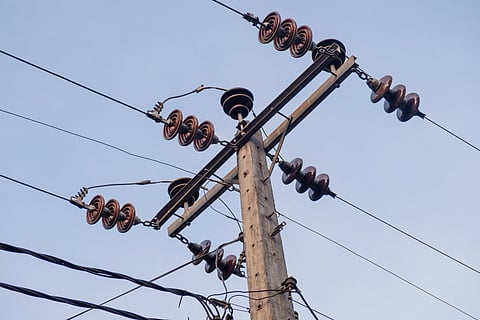

Global energy systems are under mounting pressure from the converging forces of climate change, geopolitical instability and rapid technological transformation. According to the Fostering Effective Energy Transition 2025 report published June 18, 2025 by the World Economic Forum (WEF), record energy demand in 2024 — driven by factors like artificial intelligence (AI), electrification and extreme heat — exposed deep vulnerabilities in global energy supply chains and cast doubt on the world’s ability to meet its climate targets.
Despite the continued expansion of renewables and improvements in energy efficiency, energy-related carbon dioxide emissions climbed to an all-time high of 37.8 billion tonnes last year. Clean energy investment exceeded $2 trillion — double that of 2020 — but still far short of the $5.6 trillion needed annually through 2030 to align with net-zero goals.
The Energy Transition Index (ETI) for 2025 revealed a modest 1.1 per cent year-on-year increase in global scores — more than twice the average pace of the past three years — yet transition progress remains fragmented and uneven. Only 28 per cent of countries advanced simultaneously across energy security, equity and sustainability, with many struggling to keep pace with compounding crises.
“Momentum is rebuilding,” the report found, “but, to ensure a sustainable transition, plans must translate into tangible projects and commitments into capital.”
In 2024, global energy demand surged by 2.2 per cent, the fastest growth in years, fuelled by extreme weather, surging cooling needs and the booming energy consumption of AI-driven data centres. These alone are projected to account for 10 per cent of global power demand growth by 2030.
While the electricity sector achieved a milestone 49 per cent share of clean energy, the share of clean sources across the entire primary energy mix remains a modest 14.8 per cent. Meanwhile, the growth rate of clean energy investment slowed to just 11 per cent — a sharp decline from the 24-29 per cent annual growth seen in previous years. The report warned that this slowdown could undermine progress at a time when acceleration is urgently needed.
Monetary tightening and persistent inflation have also raised the cost of capital, particularly in emerging markets where financing costs can be up to seven times higher than in advanced economies. The result is a widening mismatch between capital flows and future energy demand: Over 80 per cent of demand growth came from emerging economies, yet more than 90 per cent of clean energy investment since 2021 has flowed into advanced economies and China.
The past year brought a cascade of disruptions. Conflicts across Europe, West Asia and Africa not only reshaped trade flows but also heightened energy insecurity. With 2024 marked as the hottest year on record, energy systems faced unprecedented strain.
Security remains the most fragile dimension of energy system performance. Despite gains in equity — buoyed by moderating prices and subsidy reforms — and sustained improvements in sustainability, energy security stagnated. In many countries, it is constrained by high import dependence, inflexible grids and limited diversification.
Digital infrastructure and the growing share of intermittent energy sources are also testing the limits of electricity systems. Meanwhile, a growing number of governments are prioritising domestic control of energy materials like lithium, cobalt and rare earths, adding to the sense of fragmentation and competition.
The transition remains deeply uneven. Nordic countries — Sweden, Finland and Denmark — continue to top the ETI, owing to their diversified low-carbon energy systems and consistent policy frameworks. China, meanwhile, reached a record-high 12th position, driven by its innovation ecosystem and the world’s largest clean energy investment volumes.
India improved on energy efficiency and investment capacity, while the United States ranked 17th, supported by strong security and improving sustainability. Nigeria posted one of the most significant leaps, rising from 109th place in 2016 to 61st in 2025.
Emerging Europe and Asia pursued distinct transition paths: The former led gains in infrastructure and education, while the latter saw progress in investment and regulatory reforms. Sub-Saharan Africa made strides through stronger political commitment and improved financial flows.
Yet long-term enablers — such as regulation, infrastructure and skilled workforce development — have seen declining momentum. Transition readiness slowed to 0.8 per cent growth, well below its 10-year trend. Constraints have shifted from technology to delivery, the WEF warned, highlighting permitting delays, grid congestion and workforce shortages as key bottlenecks.
The report outlines five key priorities for building more resilient and future-ready energy systems. First, it emphasised the need for stable and adaptive policy frameworks that can attract long-term investment. Second, it calls for the modernisation of infrastructure, particularly power grids, energy storage systems and interconnectors.
Third, the report highlighted the importance of investing in skills and talent to foster innovation and ensure effective implementation. Fourth, it stressed the urgency of commercialising clean technologies in hard-to-abate sectors. Finally, it urged greater capital flows to developing economies, ensuring that investment is aligned with future energy demand.